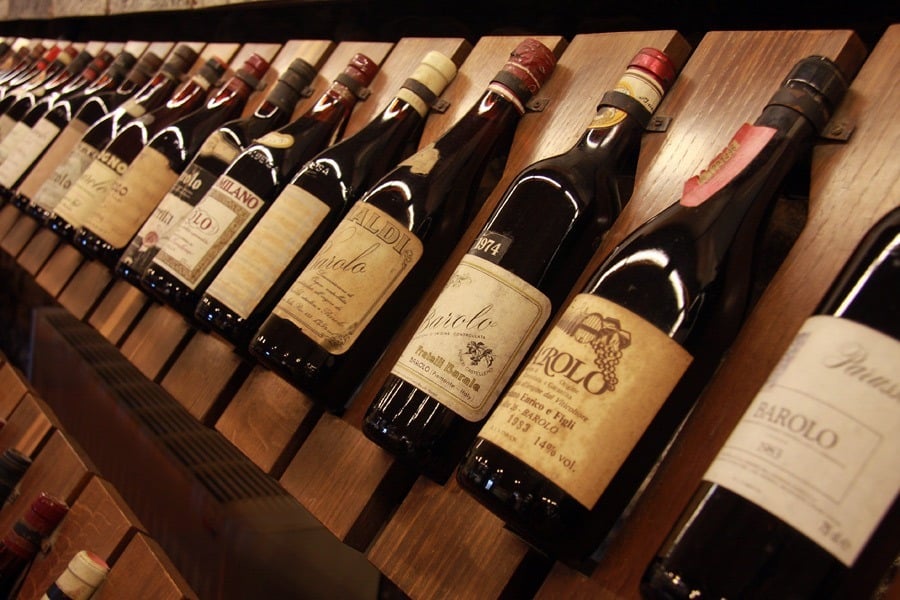Sadly for anyone teetering on the edge or recently poking a toe in the water of running a wine ecommerce business, you may already appreciate that it isn’t as simple as launching a website. That alone is fought with danger, not least because the price is not indicative of quality, as for that matter is design.
On choosing your design, research sites you feel match your ethos, and how you wish to be perceived. Not just within the wine business, after all, your customers don’t live on wine alone either. Learn what it is about design style that gets you what you want. You need to understand hosting companies, and there are plenty of cheap ones, but the limitations and restrictions these set are typically wracked with prohibitive limitations as you will soon learn.
Don’t be afraid to call other retailers up, those whose sites you like, and ask them who designed it. Your next question should be “Are you still using them”, as that cuts to the chase. As with any business it is often the calibre and quality of support which distinguishes the wheat from the chaff. They will be keen to tell you all their woes and put their supplier’s ability to perform a rescue when things go wrong, at the top of your tick-list, just as number two is how well you get along with that supplier when you offer your brief and ask for a quote.
It’s probably best to also ask, when to other retailers, how much they paid. Our experience is that in life you get what you pay for. If you need to do several hundred thousand pounds worth of turnover from a standing start in your first year, you’re going to need a site that covers a lot of bases at launch, and not discover them along the way. Itemise everything, and if you’re unsure, ask around.
You should learn about selecting platforms, as these are pre-formatted software, that enables much quicker set-up of the the back-office side. We’ve put together a list of the most acclaimed ecommerce platforms here.
Running a wine ecommerce business
There are five distinct challenges to going digital, which we’ll address in this guide:
● Managing Stock
● Content
● Omnichannel selling
● Automation and scalability
● Personalisation
When thinking about success factors, we mean structurally, and operationally, in a way that gives a business strategic flexibility and delivers high customer engagement. There are other factors, but these have been covered in other recent articles.
Managing stock and data
Mastering the data on your business management system connected to product data and rich content helps you to sell wine, and provides the basis for a relatively low-maintenance ecommerce site that’s a seamless customer channel connected to your business system.
Your business management system is responsible for stock management, shipping and movements, purchasing and generation of sales orders.
The same system should also master your inventory irrespective of its type (e.g. physical stock, en primeur, due stock and future arrivals on purchase orders, along with brokered/ consigned wines and stock lists (what we call virtual stock) offered by wholesalers or importers.
So it follows that mastering inventory on your business system will guarantee an accurate and up-to-the-minute position of wines for sale on your website, an essential starting point for ecommerce.
How many times have you heard people complain about seeing a wine listed online only to find when they click through that it’s sold out?
It’s the most intensely annoying customer experience there is, simply due to poor data mastering and connectivity. The cost of that user experience is hard to quantify in terms of the lifetime value of a potential, loss, customer; but it could be costing double-digit growth and it’s easy to see the potential upside of getting it right.
Content
Building out a complete and comprehensible product taxonomy (how you classify products) helps users come to your website and intuitively know what, and how, to search.
Accurate wine descriptions, with consistent definitions (such as country, region, sub-region, type, grape variety, designation etc.) facilitate a good search or browsing experience.
Pre-loaded information such as reviews, scores, drinking dates or other non-standard categorisations reduces the administrative overhead of constantly keying in content.
Product definitions in conjunction with supporting and rich content will naturally help with search rankings, notably in conjunction with how dynamic your content is as products within your site change.
What do we mean by supporting and rich content? Here we’re referring to product information, producer profiles, reviews and scores, your notes and recommendations, drinking advice, bottle shots or label images, and product tags that enrich the user experience and support buying decisions.
Worth avoiding is a set-up where basic inventory and pricing data feed into your ecommerce which you then have to augment via content management within the back end of your site set-up. It’s time-consuming, involves replicating and rekeying, and ties up team members to an undue extent. It’s also all too common.
Notwithstanding the facility to build content in one place, it does still require a considerable investment in time to add assets, although once done managing images, tasting notes and scores within the same system that’s handling our inventory and managing all transactions is very helpful,” he adds.
Multichannel principles work for incoming feeds as well as outgoing ones. Notably, the integration that Liv-ex has with the Hub and the feed of selective virtual stock through inventory management into ecommerce.
“That integration allows us to shape an interesting, broader list from a selection of Liv-ex offers that in turn attracts more new clients to Falcon.”
Ecommerce and omnichannel
Your ecommerce website sits within a wider channel strategy. Mastering your business processes in a single system serves the needs of all sales and marketing channels you choose to connect with, and ensures that your stock position is up to date everywhere, and at all times.
Specialist wine retailers will almost always be selling omnichannel: that is, online, taking orders over the phone, via email offers (at the very least) because of the role that relationships and advice play at this end of the market. Other merchants will also be connecting to other sales channels such as Liv-ex or Vivino.
All of which means a single point of control is vital to real-time updating of stock positions, of all types. That leads to clarity of which wines are immediately deliverable versus those that are deliverable at a future date, with the ability to communicate when they are going to become available. Don’t forget you go to your customers, not them to you. So as generations use social media channels, should you, initially attract their attention, and later ensure their loyalty to you as a customer?
Automation and scalability
Dynamic content will drive consumer interest, return visits and purchasing behaviour. At any point in time, you’ll want to determine what you want to allocate to your online ecommerce channel, and what you want to sell differently or hold back. In most markets, volume presumes more units and sales, whereas in fine wine you don’t necessarily want to disclose that you may have 100 cases of a particular wine. Better to disclose six cases, and manage the demand curve, or follow the market up after your competitors have sold through.
Being able to group products for a promotion, or a special feature, focuses your visitors on what’s new or hot, and to do that at scale requires appropriate tools that make it possible to group, ungroup, price and discount in a single process, then do the same thing week after week or month after month.
Once again, being able to do that out of your inventory management system and to determine how products feed into your ecommerce, and how they get updated and changed, will help you to make the most of your online sales channel.
Fulfilment flexibility
Depending on the types of stock you’re selling, the attributes of that stock may differ. Wines in your warehouse accounts may be deliverable the following day or the same day. Wines due from local suppliers may take a bit longer, whereas future arrivals could take weeks or years. Customer expectations need managing, in several ways, including logical fulfilment rules.
If you are a US wine retailer, you need to understand US compliance laws.
See Acquiring Customers here: Getting and keeping customers through digital marketing.
Personalisation
Personalisation is unique and individual to each consumer. To maximise the return on investment you must find and keep your customers. To distinguish yourself from your peers/competitors, the key element is offering your customers what they want. Not the person on either side of them, not a segment of all red wine drinkers, but uniquely individual and personal to the individual consumer – as if they were standing in front of you.
You achieve this using something called predictive personalisation software (PPS). This gathers all the data from your site as people come and register, that’s their buying history, but more importantly what they look at, how long for, and how many times they come back to it. All this is collected through a predictive analytics algorithm autonomously (you don’t have to touch it), from which it can know what wines to offer to what people and when to maximise the return.
PPS was devised for the wine business, and many more articles on wine are available here
PPS considered each individual alone, and not part of a group. So it would understand the distinction between regions, or perhaps chateaus for those that discerning. Alternatively, it might only be necessary to distinguish between countries or colours. The key is that everyone’s taste is personal to them, and with a PPS solution installed you get a 20x increase in ROI from all other marketing tools available – combined. These are agreed performance statistics from the top 4 leading research companies McKinsey, Forrester, Bain and Statista.
Conclusion
Don’t think an ecommerce set-up is guaranteed to succeed just because there is standard well-proven software out there, though that is good news. But it’s no guarantee of success: there are plenty of current examples of e-commerce implementations that failed due to weak or partial integrations with inventory management systems; a compromised system that’s been awkwardly adapted to the wine market; or systems that fail the single point of mastering test. Integrations with ERP systems can run into big money and can take far longer than expected.
To succeed there must be clarity overmastering of data; the two-way data flows between inventory management and the webshop; an underlying clear and robust taxonomy; origination and curating of content; and channel-specific pricing.
Success requires a well-thought-through approach to structural and operational processes, with an underlying platform that must be flexible enough to handle all wine stock types and be set up to integrate with best-in-class e-commerce software.
SwiftERM is a Microsoft Partner Company. We offer a free trial of AI machine learning hyper-personalisation for 30-days to prove viability.





